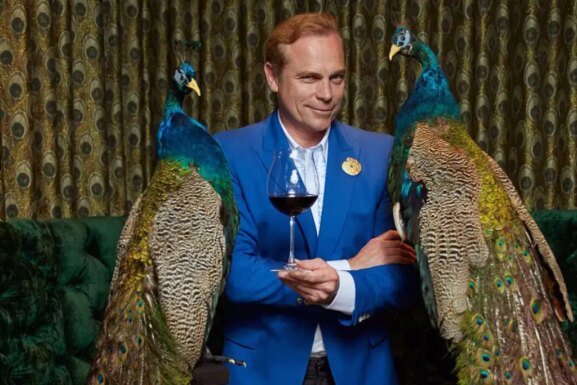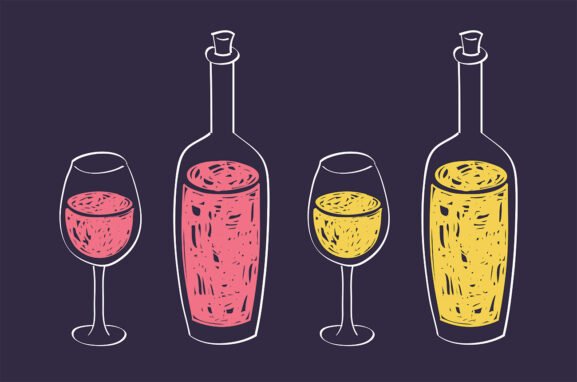Where Wachau Valley Went Wrong
As the Danube meanders its way east toward Vienna, it unveils the spectacular scenery of the terraced vineyards of the Wachau Valley. Celebrated for its winemaking traditions, the region has played a pivotal role in putting Austria on the global wine map for more than 30 years. However, lately one could raise questions about Wachau’s ability to adapt.
Last year marked the 40th anniversary of Vinea Wachau, one of Austria’s leading regional winegrowers’ organizations, which shaped the region as we know it. This milestone served as a reminder of the times Grüner Veltliner and Riesling from Wachau were the primary Austrian wines sought after in the United States.
The organization was founded in 1983 as a response to the Austrian wine industry’s heavy reliance on mechanization and quantity—an approach incompatible with the steep and inaccessible vineyards of Wachau. To justify the higher prices required, forward-thinking growers came together, establishing quality standards that set Wachau apart.
The organization, nearly 200 members strong today, led the way for at least two decades, showing how to protect origin, boost quality and market wines internationally. Their efforts also contributed to preserving the historic terraced vineyards and dry-stone walls, earning the region recognition as a UNESCO World Cultural Heritage site in 2000.
Consumer preferences have shifted toward lighter wines, reflecting larger trends. Wachau’s hierarchy of quality, established 40 years ago by Vinea Wachau, does not align with these evolving tastes. In a warming climate, where Austrian vineyards are not struggling to ripen grapes, a classification system based on ripeness is outdated.
The famous Smaragd wines, once produced only in the best vineyard sites, are now often too big. The departure of F.X. Pichler from Vinea Wachau back in 2020 was supposed to be the first wakeup call for the obsolete rules. “Now you can produce a Smaragd in every vineyard and every year,” said Lucas Pichler then.
Moreover, Wachau’s heavy reliance on traditional grape varieties raises concerns about their resilience in the face of climate change. Grüner, in particular, is vulnerable to drought, necessitating irrigation. The environmental impact of irrigation, maintaining terraces, along with resistance against EU proposals restricting pesticide use, further underscore the need for Wachau to grapple with environmental issues.
Starting with the 2023 vintage, slated for release in early May 2024: All wines produced by members of Vinea Wachau, whether labeled Steinfeder, Federspiel or Smaragd, will now carry the “Sustainable Austria” certification. This certification evaluates wineries considering their ecological, economic and social sustainability practices. While most legally permitted measures, except glyphosate, which has been banned since 2018, are generally accepted, including the use of pesticides, the certification aims to balance these practices with overall sustainability efforts. While this step forward is important, it is a half-measure that consumers might misinterpret sustainability as synonymous with eco-friendly farming practices and natural winemaking (especially surprising given the success of both in other regions of Austria).
Of the larger players, only two wineries started experimenting—Nikolaihof with its “Semicolon” range and Domäne Wachau with its “Backstage” range. Two small producers also give reason to be hopeful. One is Wabi Sabi, a project by Franz Hofstätter, whose unique expression of the famous Achleiten vineyard, called Aqualeiten, serves as a superb example of what that site can produce. The other is Von der Vogelweide, run by Daniel Vogelwaid and Michael Donabaum. Their innovation both in the cellar and in vineyard planning, and introduction of varieties that can deal with warmer weather, like Syrah, Marsanne and Roussanne, as well as use of more drought-resistant rootstocks, add a forward-thinking dimension to their endeavors. My recent ratings of their wines are a testament to their work.
There is hope for change. Wachau has historical significance and unique terroir. Balancing tradition with innovation and addressing environmental concerns is challenging, but also an opportunity to redefine the identity and ensure a vibrant future for its winemaking legacy. But it needs to start today. Sleeping giant, please wake up!
This article originally appeared in the June/July 2024 of Wine Enthusiast magazine. Click here to subscribe today!
More on the Development of Austrian Wine
From the Shop
Find Your Wine a Home
Our selection of white wine glasses is the best way to enjoy the wine’s subtle aromas and bright flavors.
Published: July 4, 2024
Like what you’re reading? Learn more about:

